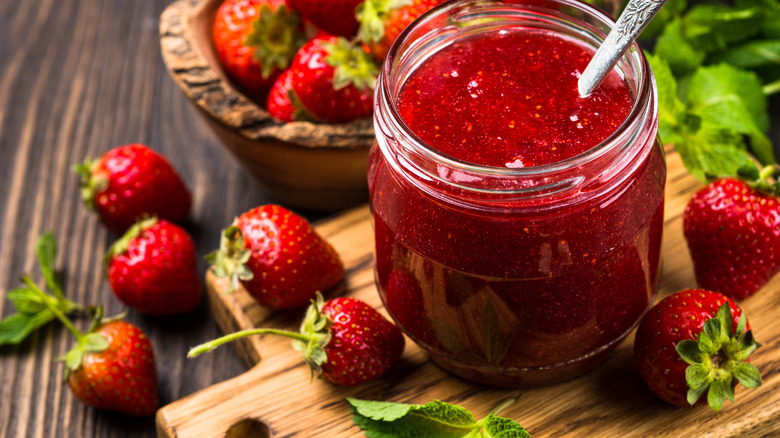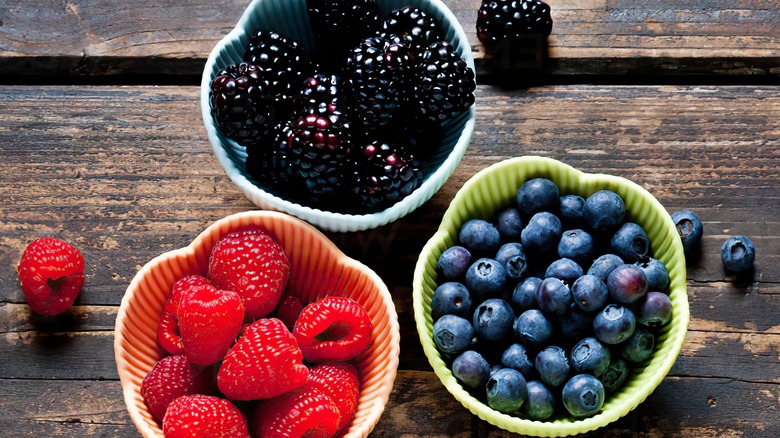Why The 'Bounce Test' Is Important For Canned Homemade Jam
There's nothing like the flavor of fresh fruit and although you can purchase most fruit any time of the year in a grocery store, there's just something about enjoying it at the peak of the season. Making jam at home is a useful way to transform ripe fruit into a preserved product to enjoy later. And what better way to brighten up the doldrums of winter than by opening up a jar packed full of the color and flavor of summertime?
If you've never made jam, don't be intimidated, since it's something a novice can successfully produce, according to The Guardian. But before getting started, it's helpful to understand the jam making process works by combining acid, fruit, heat, and pectin to create jam (via Penn State Extension). You may be familiar with all those items, except that last one. As noted by A Baker's House, pectin is a starch naturally present in fruits and berries that, when the fruit is heated, provides the structure that allows jellies and jams to set.
Finding the pectin in fruit
While pectin is found naturally in fruit, not all fruit has the same amount. According to Science of Cooking, some fruits that are naturally high in pectin include apples, grapes, and blackberries. Although pectin occurs naturally, store-bought pectin available in powder and liquid form can be added to homemade jam to help fruits lower in pectin to set. Using a recipe will give you guidance on how much added pectin is needed, but there's also another method you should keep in mind when making jam.
There's a way to gauge the amount of pectin in fruit, as reported by the Kitchn, that calls for using something called the "bounce test." This test requires you to take notice of the way a piece of fruit reacts when dropped on a table or other hard surface. Fruits high in pectin will bounce when dropped, but those lower in pectin will smoosh. Now that you know about this method, you can add a new tool to your arsenal that helps you achieve a perfectly set jar of jam.

